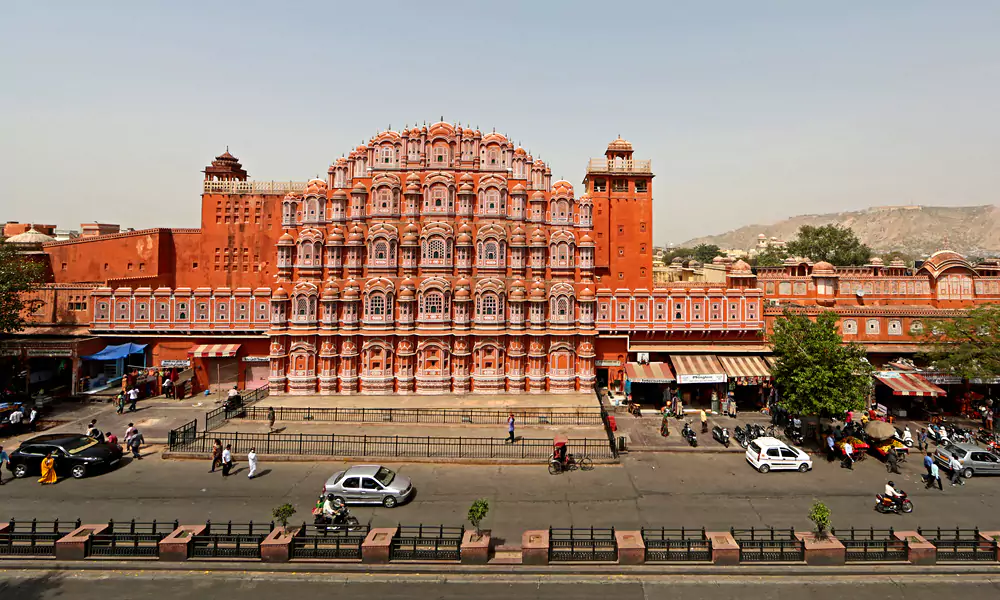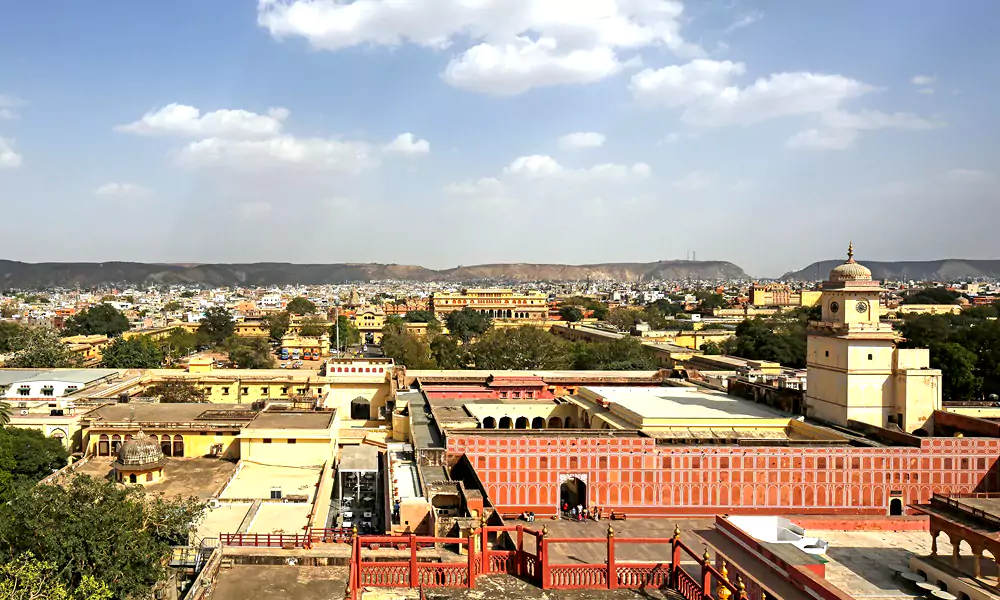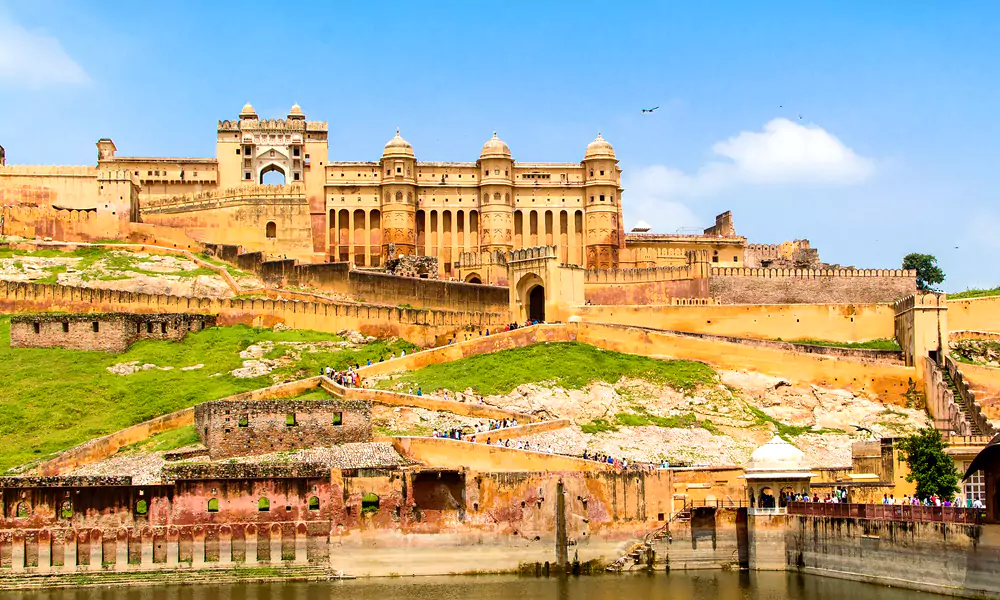
Rising proudly amidst the bustling streets of Jaipur, Rajasthan, Hawa Mahal stands as a testament to the rich cultural heritage and architectural marvels of India. Also known as the Palace of Winds, this iconic structure is not just a palace but a symbol of Jaipur’s royal past and architectural ingenuity.
Timings and Ticket Price
Hawa Mahal, the iconic building of Jaipur, remains open every day from 9 am to 5 pm. The price of entry to see this beautiful palace is different for domestic and foreign tourists. The price of the ticket for domestic tourists is ₹50, while for foreign tourists it is ₹200. This unique estate is an attractive place for travellers visiting Rajasthan.
History

Built-in 1799 by Maharaja Sawai Pratap Singh, Hawa Mahal was designed by Lal Chand Ustad in the form of the crown of Lord Krishna, replicating the shape of Lord Krishna’s crown. The primary purpose of constructing this five-story palace with its uniquely designed 953 small windows (Jharokhas) was to allow royal ladies to observe everyday life and festivals celebrated in the streets without being seen themselves. This architectural wonder served as an extension to the royal City Palace, offering the royal women a discreet vantage point.
Architecture
Design and Layout
Hawa Mahal’s distinctive pink sandstone facade with its honeycomb of windows is its most striking feature. The palace is built in the form of the crown of Lord Krishna, symbolizing a deep reverence for the deity. The five-story structure resembles a beehive with its 953 small windows or Jharokhas, intricately designed to allow ventilation and maintain airflow within the palace, hence earning the name “Palace of Winds.”
Interior Layout
While the exterior of Hawa Mahal is its most recognizable feature, the interior reflects the grandeur and opulence of Rajputana architecture. The palace complex includes several chambers, courtyards, and galleries that once housed the royal women and their attendants. The interior walls are adorned with intricate carvings and frescoes depicting scenes from Hindu mythology and daily life during the Rajput era.
Significance
Cultural and Historical Importance
Hawa Mahal holds immense cultural and historical significance as a symbol of Jaipur’s rich heritage and royal legacy. It stands as a testament to the architectural prowess of the Rajputana era and continues to attract tourists and historians alike, offering a glimpse into the royal lifestyle of the past.
Tourist Attraction
Today, Hawa Mahal is one of Jaipur’s most visited tourist attractions, drawing visitors from around the world who come to marvel at its unique architecture and explore its rich history. It offers panoramic views of the city and remains an iconic landmark that symbolizes Jaipur’s identity as the “Pink City.”
Best Time to Visit
The best time to visit Hawa Mahal is during the winter months, from October to March when the weather is pleasant and ideal for sightseeing. The mornings and evenings offer cooler temperatures, making it comfortable to explore the palace and its surroundings.
How to Reach
- By Air: Jaipur International Airport is the nearest airport, located approximately 13 kilometres away from Hawa Mahal. From the airport, visitors can take a taxi or a prepaid cab to reach the palace.
- By Rail: Jaipur Junction Railway Station is well-connected to major cities across India. From the railway station, visitors can hire a taxi or an auto-rickshaw to reach Hawa Mahal, which is located in the heart of the city.
- By Road: Jaipur is well-connected by roadways, and visitors can reach the city via state-run buses, private buses, or taxis. Once in Jaipur, Hawa Mahal is easily accessible by local transport or private vehicles.
Nearby Attractions
1. City Palace

Located nearby, the City Palace is another must-visit attraction in Jaipur. It houses museums, courtyards, and beautiful gardens that showcase the royal heritage of Rajasthan.
2. Jantar Mantar

The Jantar Mantar observatory, a UNESCO World Heritage site, is located within walking distance from Hawa Mahal. It features a collection of architectural astronomical instruments dating back to the 18th century.
3. Amer Fort

Situated atop a hill overlooking Maota Lake, Amer Fort is a majestic fortification known for its stunning architecture, intricate carvings, and panoramic views of the surrounding landscapes.
Travel Tips for Visiting
- Timing: Visit early in the morning or late afternoon to avoid crowds and experience better lighting for photography.
- Footwear: Wear comfortable shoes as you may need to climb stairs to reach the upper levels of the palace.
- Clothing: Dress modestly as a sign of respect when visiting religious and historical sites in India.
- Photography: Capture the intricate details of the palace’s facade and interior, but be mindful of photography restrictions inside.
Frequently Asked Questions (FAQs)
Hawa Mahal translates to “Palace of Winds” in English, owing to its unique design that allows cool air to circulate through the palace.
Yes, Hawa Mahal is open to visitors throughout the year. Visitors can explore the exterior and visit certain parts of the interior that are accessible to the public.
While most of the palace’s charm lies in its exterior facade and the views it offers, visitors can explore some parts of the interior to get a glimpse of the royal quarters and the intricate architecture.
A typical visit to Hawa Mahal can take anywhere from 1 to 2 hours, depending on how much time you spend exploring the palace and taking in the views.
The entry fees for Hawa Mahal are nominal for Indian nationals and slightly higher for foreign tourists. It is advisable to check the current entry fees before planning your visit.
Conclusion
Hawa Mahal, with its ethereal facade and rich history, continues to enchant visitors with its architectural brilliance and cultural significance. A visit to this iconic palace offers not just a glimpse into Rajasthan’s royal past but also a deeper appreciation of India’s architectural heritage. Whether you’re exploring Jaipur’s bustling streets or admiring the intricate Jharokhas from within, Hawa Mahal stands as a timeless symbol of Rajasthan’s architectural splendour.
